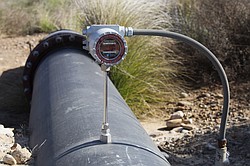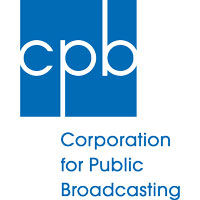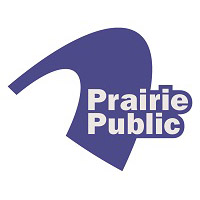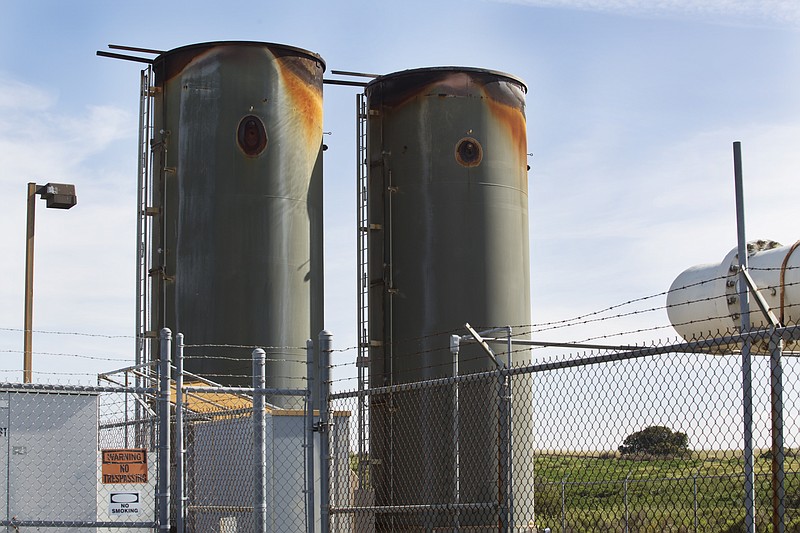
Megan Wood / inewsource
A flare at the Miramar Landfill burns off gas after being captured by the many wells on the property, March 4, 2016.
Four and a half months after a torrent of methane burst from a storage field owned by Southern California Gas Co., damaging the atmosphere and contributing to climate effects like beach erosion, wildfire and extreme hot days, a plan has been drafted for the company to largely repair that damage.
The California Air Resources Board, the state’s climate change guardian, has issued a draft plan of action for the company to follow that would “generate reductions in greenhouse gas emissions … that are at least equivalent to the emissions from the leak, and set the stage for substantial additional emission reductions.”
Livestock, landfills and gas lines all discharge methane, so each offers an opportunity for repair. There are others: Southern California Gas might also be able to switch out polluting equipment in disadvantaged communities or install rooftop solar. Some experts go so far as to call this a silver lining to the disaster.
The ruptured well in the Aliso Canyon Gas Storage Field marked the largest known release of methane in U.S. history, according to a study published in the journal Science on Feb. 25.
The 107,000 tons of methane that escaped from the damaged well reversed some of the progress California has made since it began to address climate change. But that calculation changes if Southern California Gas can address seeps, hisses and leaks of methane and other greenhouse emissions across the landscape.
And that is exactly what the company has promised to do.
“We will develop and we will implement a plan to mitigate the leaked greenhouse gas emissions, at our expense, not at the expense of our customers,” President and CEO Dennis Arriola said Feb. 18 at the announcement that the well was sealed.
The challenge will be in working out the details.
In its draft “Aliso Canyon Methane Leak Climate Impacts Mitigation Program,” the Air Resources Board established priorities including addressing the substantial amounts of methane produced in the industry that is the source of the country’s milk, cheese and yogurt.
“Dairy manure and the cows themselves are the single biggest source of methane in the state,” said Bart Croes, chief of research at the Air Resources Board.
Powerful methane wafts from the business end of cows and is carried in their burps. It’s also created when cow dung is washed from animal pens into ponds of slurry, where there is no oxygen. Methane often forms in oxygen-free environments. The technology to cover these ponds, if not the ends of cows, is relatively simple, but “the economics haven’t worked out yet,” Croes said. So dairy methane is a problem with a proven technological solution that hasn’t been cost effective — a good potential candidate for Southern California Gas to address.
Croes said the company could also address leaks at landfills. As garbage decays, in another anaerobic environment, it creates methane.
It did this despite a methane-capture system: wells sunk deep into the trash that collect the gas. Vacuum pressure sucks this landfill gas through pipelines laid in the fill toward equipment used to make electricity for the Marine Corps or for the city, or toward a flare, where it’s burned off.
Michael D. Thompson, deputy director of the city Environmental Services Department, would be glad to shed the honor of county’s worst methane emitter. He says $6.4 million is budgeted to extend methane capture at Miramar between now and 2019.
“We don’t know anything about any possible grants or monies that might be available,” he said. “If there was somebody willing to kick in extra money, we would love to listen.”
University research carried out in cooperation with government agencies such as the Air Resources Board and NASA, as well as environmental organizations such as the Environmental Defense Fund have made it increasingly clear that methane releases have been undercounted, to the detriment of the atmosphere.
One methane source recently discovered is the fueling stations where natural gas powered vehicles go to fill up their tanks. Francesca Hopkins, now an environmental scientist at the Jet Propulsion Laboratory in Pasadena, and a team recently published a study in which researchers drove a cargo van that could continuously sample and analyze for methane hundreds of miles across Los Angeles, Orange and Riverside counties. They found 213 previously unknown methane hot spots. Their paper appeared in the Journal of Geophysical Research: Atmospheres.
“The most significant fugitive emissions of natural gas we observed came from compressed natural gas fueling stations,” said Hopkins, formerly of UC Irvine.
The leakiest site of all, besides the natural La Brea Tar Pits, was the Clean Truck Fueling Station in Long Beach.
Tim O’Connor, head of the California Climate Initiative with the Environmental Defense Fund, would like to see a focus specifically on the methane leaks coming from the oil and gas industry.
“Natural gas is being distributed through pipes around our houses, in our neighborhoods, in our communities. And the pipes leak. All the time,” O’Connor said.
New rules address new oil and gas facilities and leave the leaky equipment of an earlier era to do its damage.
“Things like abandoned and inactive oil and gas wells across California. The state estimates there are over 20,000 of these,” he said. Nationwide, abandoned wells number in the millions.
Research sponsored by the EDF indicates 2 percent of all natural gas, from the time it’s released from the ground to the moment it reaches kitchen stoves, is being lost to the atmosphere.
The organization believes Southern California Gas could cancel out the entire 107,000 tons lost from the well failure just by eliminating losses in the transport pipelines and equipment that bring gas from Texas and the Rocky Mountains to the Aliso Canyon storage field in Los Angeles County. (Gov. Jerry Brown, however, declared that the reductions should take place within California.)
“It is remarkable how much methane is coming out of our oil and gas sector,” O’Connor said.
He is not alone in this view.
Gary Gero is senior adviser to the Climate Action Reserve, whose expertise in evaluating carbon offsets is recognized by the state. The nonprofit investigates where greenhouse gases are being released, yet are not likely to be fixed by market forces or law. These releases represent an opportunity for businesses and individuals who want to offset or cancel out their carbon emissions. They must eliminate a problem that would not have been eliminated otherwise. This concept is crucial in the carbon business and is known as “additionality.”
“There’s been a mismatch between what the state had been assuming were the emissions of methane in the state and what the actual emissions that people were measuring out in the field were. And as you look into it, there are a lot of sources that simply weren’t being captured or identified — the natural gas distribution being system being one of them.”
Southern California Gas could contract with a company that knows how to clean up old wells and pay them to clean up 5,000 of them, he said.
Up to this point, counting tons of methane saved to make up for tons of methane lost at Aliso Canyon is a simple equation.
What will be contentious will be proposals to reduce other greenhouse emissions, such as carbon dioxide or soot. The question will be, how many tons of carbon dioxide are equal to one ton of methane? The science on that question has been evolving and currently stands here: One ton of methane released into the atmosphere exerts roughly the same global warming influence as 84 tons of carbon dioxide, when viewed over a 20-year period. Methane hits the atmosphere hard and fast compared to carbon dioxide, which hangs around doing its damage for a century, (meaning we are still experiencing the climate effects of industrial exhaust released back in 1920).
When methane’s effect is stretched out over a century — a method often still used by regulators — the current science says one ton of methane is 28 times as powerful as one ton of carbon dioxide. But many regulatory agencies do not use the most recent international assessment on climate change, issued in 2013. Instead they are still using one issued almost a decade ago.
The implications matter for Southern California Gas, to the extent that it becomes involved in paying for projects that reduce carbon dioxide, because it involves such a range of liability.
“SoCalGas has committed to the Governor to work with his office and state agencies to develop a framework to mitigate the greenhouse gas emissions resulting from the leak,” said Melissa Bailey, a company spokeswoman.
As the Aliso Canyon disaster began, the Air Resources Board was already knee deep in a plan to address methane and other shorter-lived pollutants in an effort to “immediately slow global warming and reduce the impacts of climate change.” This plan uses a 20-year impact for methane. But the agency’s other records, where companies report their emissions, use a 100-year timeframe.
The board says the question has not been decided.
“We would prefer to use a 20 year,” Croes said, but, “it will be something that we open up for public.”
As for the preferences of Southern California Gas, with whom the agency has been meeting, “They’ll be treated like every other stakeholder,” Croes said.
The agency says it wants the Aliso Canyon emissions to be completely mitigated, and expressed a preference for projects that benefit economically disadvantaged communities, have a multiplier effect, or demonstrate technology with an example that others could follow.
But Tim O’Conner of the EDF’s California Climate Initiative says the company should just stick to eliminating methane. “By focusing on methane as the pollution that was emitted, and the pollution that must be reduced, you avoid bickering over whether you should look at methane as a 20-year climate pollutant or a hundred-year climate pollutant,” he said. “That’s going to be tremendously helpful for figuring out how much needs to be reduced.”
At least one industry has weighed in with a suggestion for Southern California Gas to aid in a project that would eliminate carbon dioxide, not methane — the solar industry. Brad Heavner, policy director for the California Solar Energy Industries Association, points out that water in many homes is heated in 50-gallon tanks fired by gas, 24 hours a day.
But there are easily available roof panels that can pre-heat that water so your gas heater turns on far less frequently.
“So it would make a lot of sense for SoCalGas to fund these programs so we can provide opportunities for customers to heat water without burning natural gas,” Heavner said.
In its draft plan, the Air Resources Board has included suggestions for promoting energy efficiency and reducing home reliance on fossil fuels.
Environmental justice groups would like some clean energy installations to happen in environmentally hard-hit neighborhoods, for example Pacoima, in the San Fernando Valley.
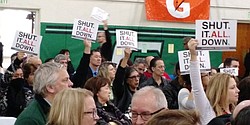
Ingrid Lobet / inewsource
Signs asking for the complete closure of the Aliso Canyon Gas Storage facility, which Southern California Gas considers an essential asset, are beginning to appear at rallies held by residents of Porter Ranch, Jan. 9, 2016.
Some comments submitted online to the board request that the company pay for both solar hot water and solar electric panels on the homes of Porter Ranch area residents. That would not only reduce a small amount of greenhouse gas emissions, it would also increase the value of homes damaged by the negative association of the leak.
Some of the improvements Southern California Gas pays for could have implications beyond the 107,000 tons of methane, said Josh Margolis, a carbon markets expert and managing director of Environmental Markets, part of the Environmental Defense Fund, because the control technology could last for years.
“It could be the gift that keeps on giving,” he said.
This story comes to us from inewsource, an independent investigative news organization.

